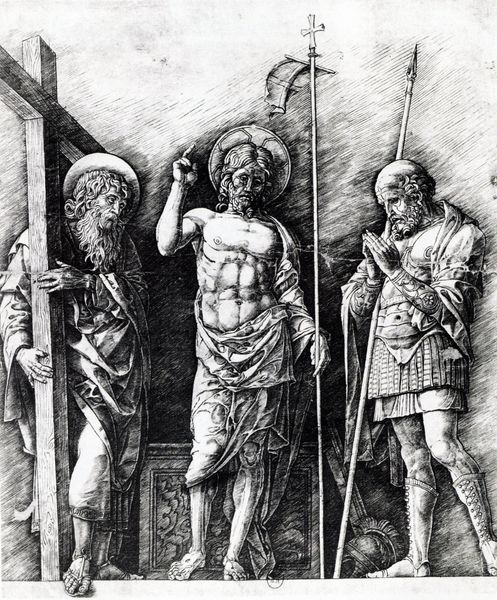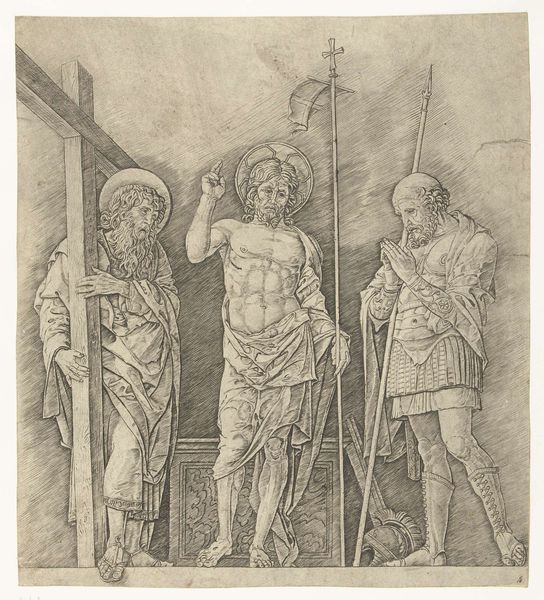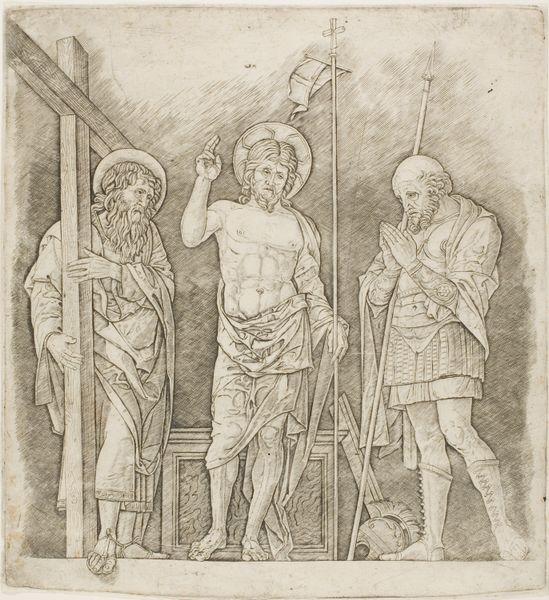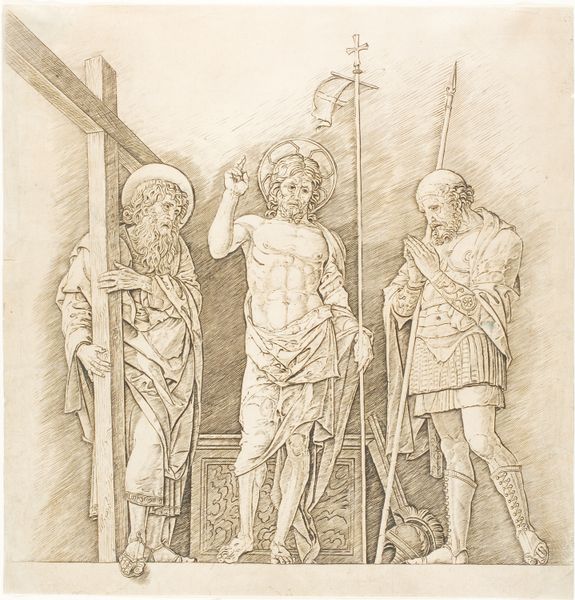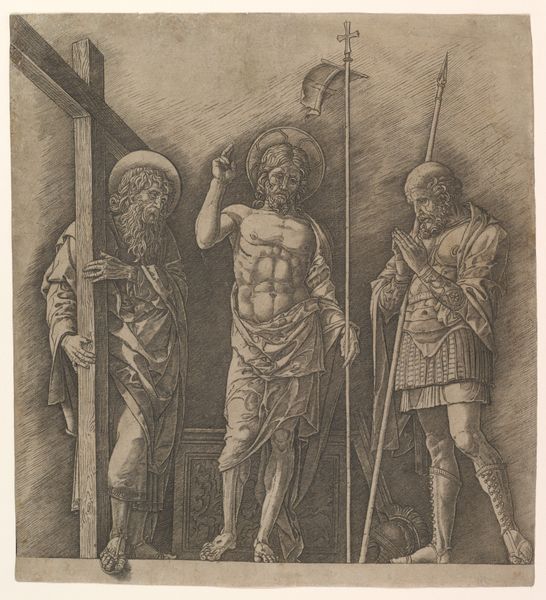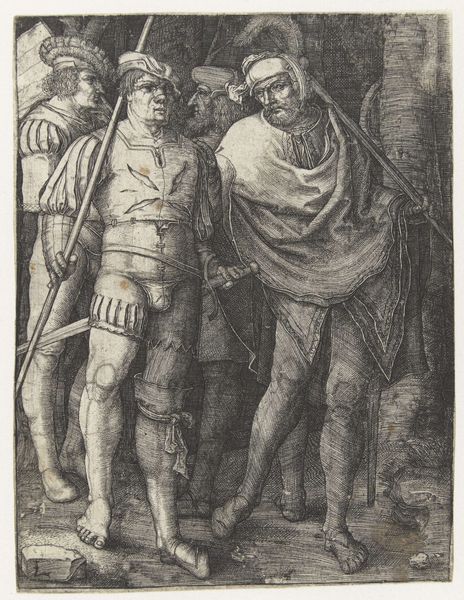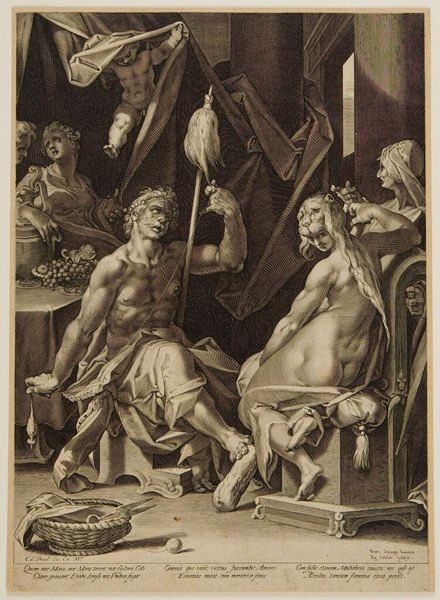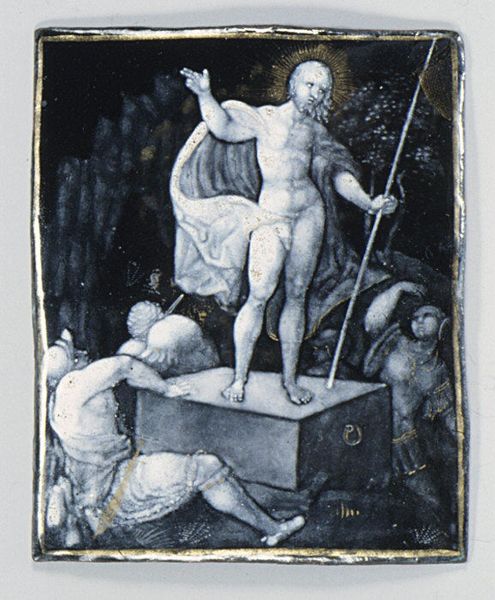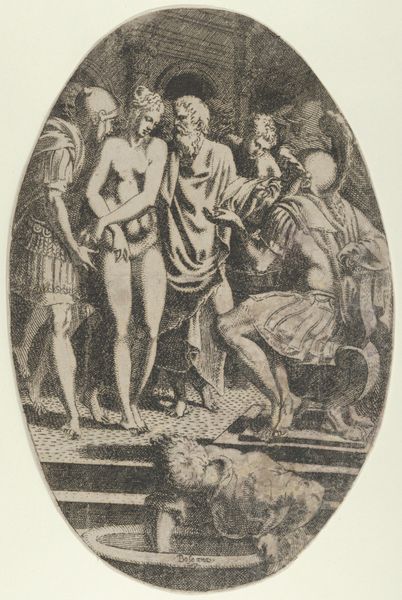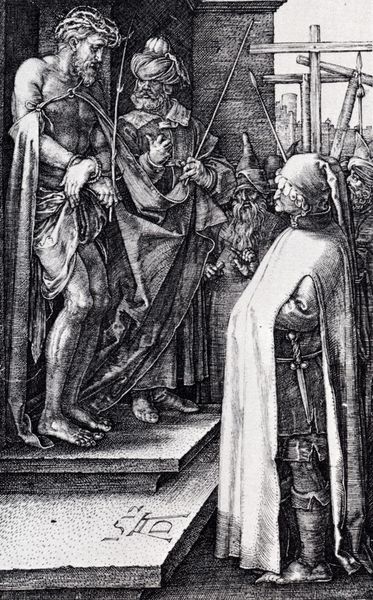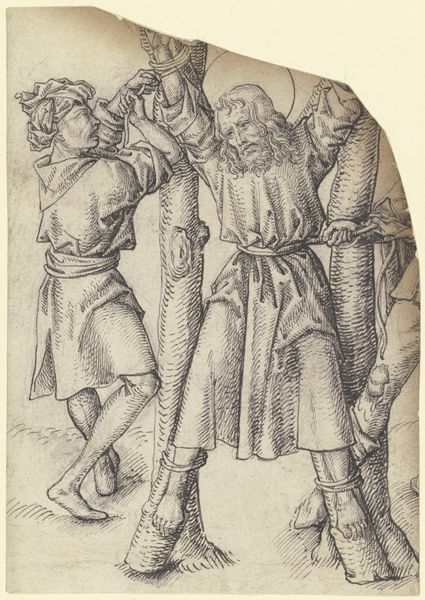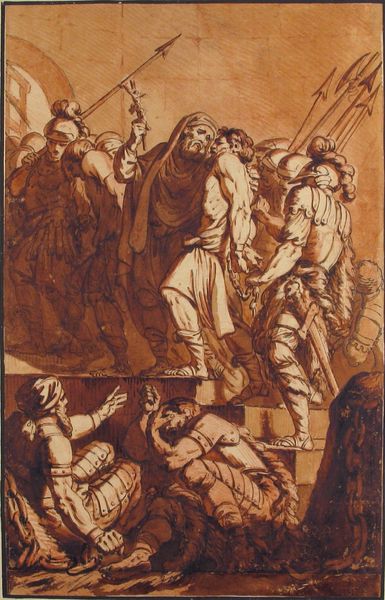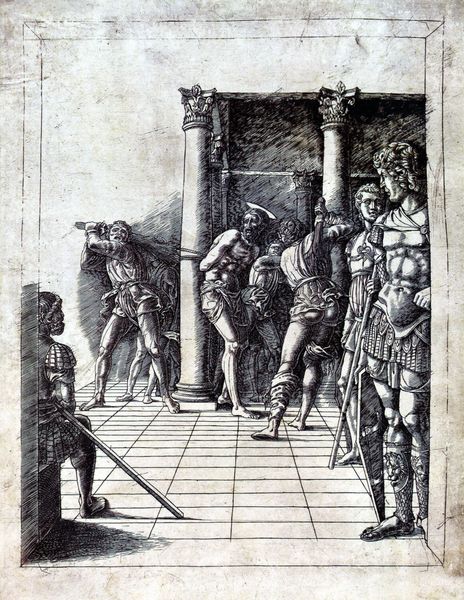
print, engraving
# print
#
pencil sketch
#
charcoal drawing
#
figuration
#
charcoal art
#
jesus-christ
#
pencil drawing
#
christianity
#
history-painting
#
italian-renaissance
#
engraving
#
christ
Copyright: Public domain
Curator: Immediately, the stark, graphic nature strikes me – it's powerful in its simplicity, like a raw charcoal drawing, capturing a key moment with potent clarity. Editor: This is Andrea Mantegna’s engraving, “The Resurrection of Christ.” While undated, it reflects his distinctive Italian Renaissance style and would have circulated widely as a print. Curator: Absolutely. See how Christ is positioned centrally, almost bursting forth, yet framed by the two figures on either side: the sorrowful figure holding the cross and the armored man with clasped hands. Each one projects different emotions. Editor: Mantegna was deeply interested in ancient art. Notice the classically rendered physique of Christ – very idealized, echoing the heroic statuary being unearthed during the Renaissance and how this linked Christ's triumph over death with concepts of human achievement central to Renaissance thought. Curator: Yes, and those gazes create a narrative field of response around Christ, capturing doubt, supplication, and witnessing. Editor: Exactly. Prints were a democratic medium – not just for the wealthy, as panel painting was. Works like this helped disseminate not just religious narratives but also aesthetic ideals tied to the court culture of northern Italy at this time, reaching far beyond the elites. This affects what ordinary people expect to see and what is worthy of art, shaping broader aesthetic sensibilities. Curator: The visual weight that this imagery carries over time – and even today – still fascinates me. The cultural memory encoded here speaks to core beliefs, loss, and the hope for renewal. That enduring cycle continues to resonate. Editor: For me, its value is a striking example of how visual representations participate in socio-religious movements – shaping identity and power. Curator: It's like the symbol continues evolving, with this original form working like an anchor that’s always accessible. Editor: A very persistent anchor.
Comments
No comments
Be the first to comment and join the conversation on the ultimate creative platform.
